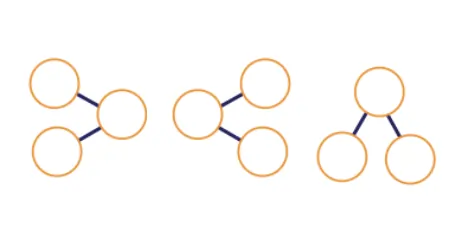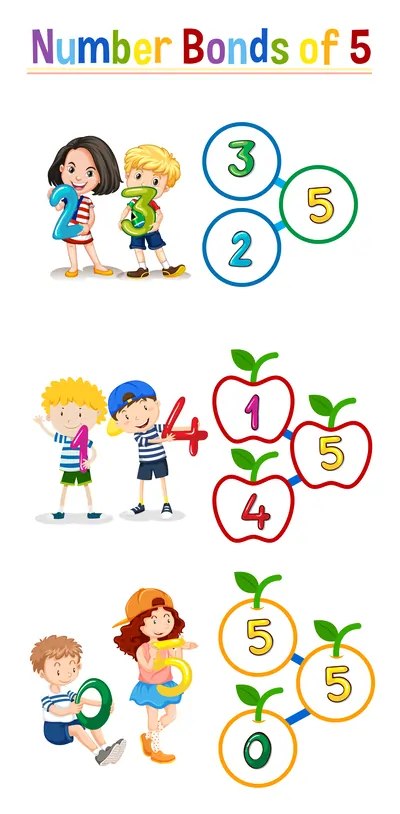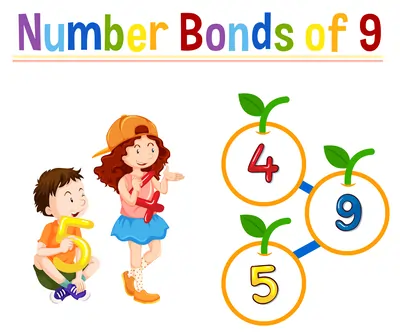Number Bonds and Singapore Maths: Building a strong mathematical foundation
- Tags:
- Primary Maths

Singapore Maths, renowned for its effectiveness in teaching mathematics, is a holistic approach that breaks down mathematical concepts into manageable parts, making it easier for students to grasp and apply these ideas. One fundamental concept that plays a pivotal role in this method is "number bonds."
Understanding Number Bonds
In Singapore Maths, number bonds are essentially a way of breaking down numbers into their constituent parts. They help students understand how numbers relate to one another.
A number bond is a special way to show students how numbers relate to one another. Each number bond has three parts: two numbers at the top and a result at the bottom. The two numbers on the top are added together, and the answer is shown at the bottom. This helps people see how numbers can be put together in a simple and clear way.

The above is a formal method to display a number bond, but you can also show a number bond in the following ways:

In all of these cases, when you see two circles together, they represent two numbers. The circle connected to both of them shows the result when you add those two numbers.
Now, let's look at a few examples to see how number bonds work.
Number bonds of the number 5

(Image by brgfx on Freepik)
Number bonds of the number 9
There are many ways to create number bonds for the number 9. Let's explore two examples. When you add 4 and 5, you get 9, and the same happens when you add 2 and 7. Now, let's take a look at how these number bonds appear:


(Images by brgfx on Freepik)
Practice time: Let's generate additional number bonds for the number 9. How many different combinations can you come up with?
Using Number Bonds for subtraction
Number bonds are equally useful for subtraction. When you know the whole and one of the parts, you can find the missing part. For instance, if you have 10 candies and you remove 7, you are left with 3. This can be represented as the subtraction sentence, "10 - 7 = 3."
Benefits of using Number Bonds
The utilisation of number bonds enhances a student's number sense. It promotes an in-depth understanding of numbers, helping students perform mental calculations with ease. As students progress, their mathematical fluency improves, leading to more complex problem-solving skills.
Common challenges and solutions
Some students may encounter difficulties when first introduced to number bonds. Common misconceptions include confusing addition with subtraction. Addressing these challenges early on and providing clear explanations and examples can help students overcome them.
In conclusion, number bonds are a vital component of a child's maths education. They help children understand the relationships between numbers, making both addition and subtraction easier to grasp. By mastering number bonds, children can build a strong foundation for future mathematical success.


 SG
SG  VN
VN 



















